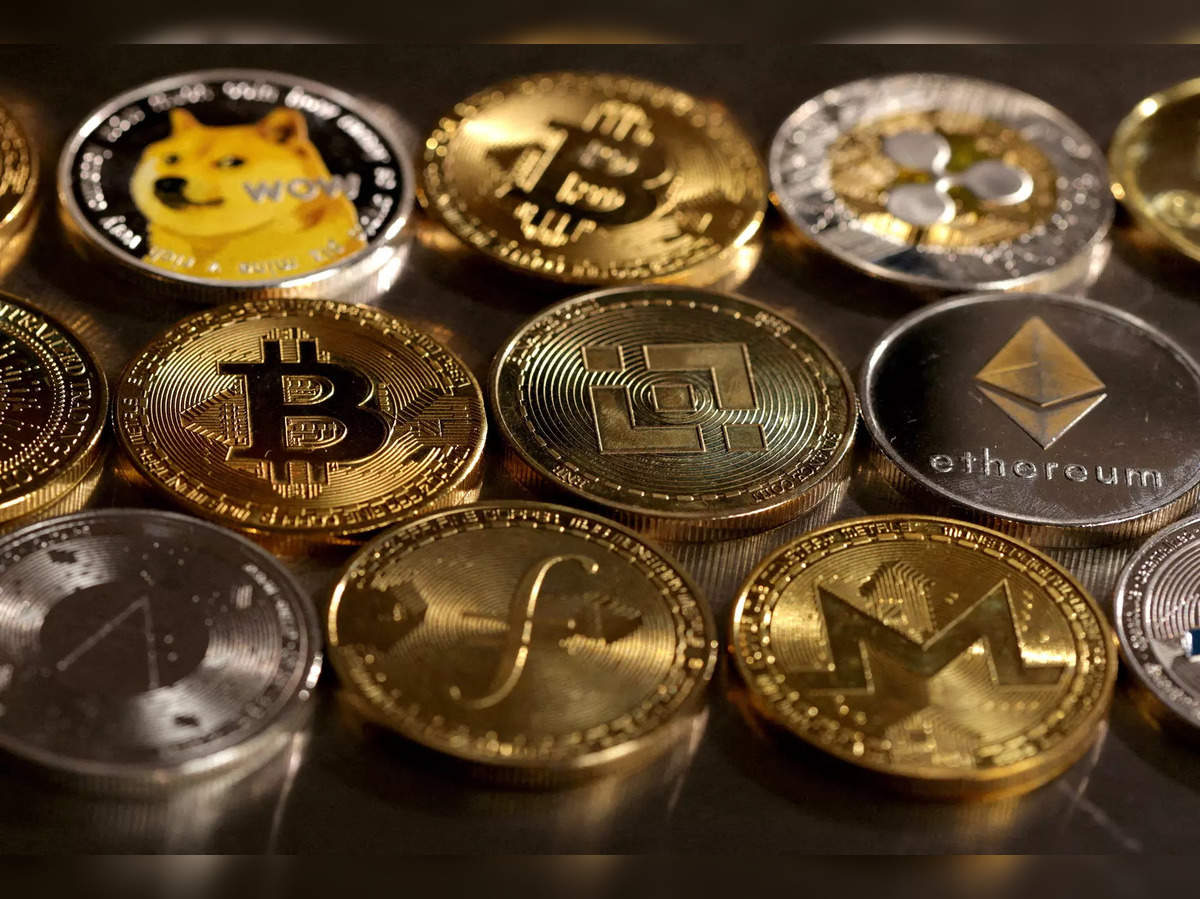
Coins have been a part of human history for thousands of years, serving as more than just currency. Did you know the first coins were minted in ancient Lydia around 560 BCE? These small metal discs have evolved, reflecting cultural, historical, and artistic values. From the ridged edges on U.S. coins designed to prevent counterfeiting to the world's most expensive coin, the 1794 Flowing Hair Silver Dollar, worth $10 million, coins tell fascinating stories. Whether you're a seasoned numismatist or just curious, there's always something new to learn about these tiny treasures that have shaped economies and cultures worldwide.
Ancient Origins and Early Uses of Coins
Coins have been around for thousands of years, playing a crucial role in trade and commerce. Let's explore some fascinating facts about their early history and uses.
-
Ancient Origins of Coins: The first coins were minted in Lydia, in modern-day Turkey, around 560 BCE. These early coins were made from electrum, a natural alloy of gold and silver.
-
Coins as Legal Tender: Coins are not just legal tender; their value can also be determined by their metal content and rarity. Some ancient coins are worth their weight in gold today.
-
Ridged Edges on Coins: The U.S. Mint added reeded edges to coins to prevent criminals from shaving off small amounts of precious metals. This practice dates back to the 18th century.
-
First Coins Produced by the U.S. Mint: In March 1793, the U.S. Mint produced its first batch of coins, consisting of 11,178 copper cents. These coins were worth a total of $111.78.
-
Nickel’s Unique Name: The nickel is the only U.S. coin named after its metal content. Despite its name, it is made from an alloy that is 75% copper and only 25% nickel.
Coin Collecting and Numismatics
Coin collecting, or numismatics, is a hobby that has captivated people for centuries. Here are some intriguing facts about this fascinating pursuit.
-
Coin Collecting is an Ancient Hobby: Coin collecting dates back thousands of years to ancient kings and queens. It has been called "the hobby of kings."
-
Coin Collecting is Not Just for the Rich: While some coins are valuable, many can be purchased for a slight premium over face value. Even coins from the 19th century can be affordable.
-
What is Numismatics?: Numismatics is the study of coins and money. Numismatists examine coins for their historical, cultural, and artistic significance.
-
Major Organization for Coin Collectors: The American Numismatic Association (ANA) provides resources, education, and a community for coin collectors.
-
Value of Coins: A coin's value is determined by its scarcity, preservation, and metal content. A well-preserved 1890s Double Eagle gold coin can be a valuable investment.
Notable Coins and Their Stories
Some coins have unique stories and historical significance. Let's dive into a few notable examples.
-
First President on a Coin: In 1909, President Lincoln became the first real person and American president to appear on a regular-issue American coin.
-
African-American Representation on Coins: The Booker T. Washington Memorial Half Dollar, minted from 1946 to 1951, was the first coin to feature an African-American.
-
Euro Coins: Euro coins first came into use in 2002. As of January 2020, there were 135 billion euro coins in circulation worldwide.
-
Coin Ceremony for Ships: Sailors place coins under the keel block of new ships for good luck. This tradition dates back to Roman times.
-
Most Expensive Coin: The 1794 Flowing Hair Silver Dollar is the world’s most expensive coin, costing $10 million. It was the first silver coin minted by the U.S. Federal Government.
Cultural Significance and Traditions
Coins are not just currency; they hold cultural significance and are part of various traditions around the world.
-
Trevi Fountain Coin Toss: Tossing a coin into Rome's Trevi Fountain is said to guarantee a return to the city. Tossing two coins promises love, while three coins mean marriage.
-
Filipino New Year’s Tradition: Filipino children fill their pockets with coins on New Year’s Eve. Shaking out their pockets at midnight is believed to bring good luck and wealth.
-
Roman Coin Toss Game: The coin toss game "navia aut caput" originated in ancient Rome. It involved tossing a coin with a ship’s prow on one side and the emperor’s head on the other.
-
British Coin Toss Game: In Britain, the coin toss game was called "cross and pile." The name came from the indentation made by the hammer used to strike the coin.
-
Steven D. Levitt’s Study: Economist Steven D. Levitt conducted a study where people struggling with decisions flipped a coin. Those who made changes based on the coin toss reported being happier months later.
Modern Coin Production and Innovations
Coin production has evolved significantly over the years. Here are some interesting facts about modern minting techniques and innovations.
-
Royal Mint’s Move to Llantrisant: The Royal Mint moved from Tower Hill to Llantrisant in 1968, marking a significant shift in minting processes.
-
Gold Bar at the Royal Mint Experience: Visitors to the Royal Mint Experience can try lifting a 400-ounce gold bar worth £350,000. The bar is closely monitored by security.
-
Record Coin Production: In 2016, the Royal Mint set a record by striking 4 million 12-sided £1 coins in a single day.
-
Sir Isaac Newton’s Role: Sir Isaac Newton served as the warden of the Royal Mint for the last 30 years of his life. He was responsible for various minting procedures.
-
Raised Edges on Coins: Raised edges prevent coins from sticking together and protect the imagery. These edges are engraved before the coins are struck.
Fun Facts and Trivia
Coins are full of fun facts and trivia that can surprise and delight. Here are a few to enjoy.
-
Coin Production Speed: In the Royal Mint's pressing room, 750 coins are struck per minute, equating to 12.5 coins per second.
-
Warehouse Capacity: The Royal Mint's warehouse can hold 4,600 pallets of coins, worth approximately £46 million. A single pallet can weigh a tonne.
-
Senior Research Curator: Graham Dyer, the senior research curator for the Royal Mint museum, has worked there for over 50 years. He enjoys the historical aspect of coins.
-
Community at the Royal Mint: The Royal Mint has a strong family community. Sons often follow fathers into work, creating a loyal workforce.
-
Most Produced Coin: One-penny coins are the most produced by the Royal Mint. The Penny Lane mini, similar to the one in the Beatles’ video, is also notable.
Coin Design and Approval
Designing coins is a meticulous process that involves several steps and approvals. Here are some insights into this process.
-
Coin Design Approval: Both the Queen and the Chancellor must sign off on new coin designs. The Royal Mint advisory committee creates a list of themes for approval.
-
Annual Coin Production: The UK issues 1.5 billion new coins every year, supporting a large industry and community around coin minting.
-
Numismatists’ Interest: People collect coins for various reasons, including historical interest, artistic appreciation, and investment potential.
-
Royal Mint’s Global Reach: The Royal Mint produces coins for around 80 countries worldwide, highlighting its importance in international trade.
-
Royal Mint Experience Visitors: Since its opening in 2016, the Royal Mint Experience has had over 200,000 visitors, offering a unique look at coin history and production.
Historical and Artistic Value of Coins
Coins are not just currency; they are historical artifacts and works of art. Let's explore their historical and artistic value.
-
Techniques of Production: Advanced techniques ensure precision and quality in coin production. Engraving dies with signatures or imagery is a key step.
-
Historical Data from Coins: Coins reflect the wealth and power of cities and states. Studying their distribution helps define the extent of historical empires.
-
Ancient Greek Coins: Ancient Greek coins were among the first to feature intricate designs and inscriptions, playing a significant role in numismatics.
-
Roman Coins: Roman coins from the republic and empire periods are renowned for their artistic and historical value. They often featured images of emperors and gods.
-
Modern Coinage: Modern coinage continues to evolve with advancements in technology and design. Commemorative coins and circulating currency tell stories about their time and place in history.
Unique Coins and Their Stories
Some coins have unique stories that make them stand out. Here are a few examples.
-
Catherine the Great’s Copper Coin: Catherine the Great of Russia issued the largest copper coin ever used in circulation, the 5 kopeks coin, weighing an average of 51 grams.
-
Uzbekistan’s Tiyin Coin: Uzbekistan’s tiyin coin is worth less than any other coin worldwide, yet it remains legal tender.
-
Female Representation on Coins: Women have adorned coins throughout history. Cleopatra was the first female to appear alone on Egyptian coins, while Queen Isabella I of Spain was the first foreign ruler on a U.S. coin.
-
Coin Toss Ritual: The coin toss ritual at Rome's Trevi Fountain became popular after the 1954 film "Three Coins in the Fountain." Around €1.5 million in coins is collected annually and donated to charity.
-
Patron Saint for Numismatists: Saint Helena is the patron saint for numismatists. She is associated with the discovery of the True Cross and revered by collectors.
Coin Production Around the World
Coin production is a global industry with fascinating facts and figures. Let's take a look at some of them.
-
Production Volume of the U.S. Mint: The U.S. Mint produces more coins and medals than any other mint in the world. It also makes coins for other countries.
-
Coin Production in the European Union: Coin minting in the EU generates more than €13 billion annually, supporting over 16,858 jobs.
-
Buying Coins from the Mint: Both the U.S. Mint and the Royal Canadian Mint offer coins, commemoratives, and sets for collectors. These coins are known for their fine craftsmanship.
-
Be Wary of Buying Coins from Infomercials: Coins advertised in infomercials are often overpriced. It's essential to refer to a coin value guide and read educational books before purchasing.
-
Royal Mint’s Global Reach: The Royal Mint produces coins for around 80 countries, underscoring its importance in international trade and commerce.
Coins: More Than Just Currency
Coins aren't just pieces of metal; they're snapshots of history, art, and culture. From ancient Lydia to modern minting, these small objects tell big stories. Whether it's the ridged edges to prevent counterfeiting or the first U.S. coins minted in 1793, each fact adds a layer of intrigue. Coins like the 1794 Flowing Hair Silver Dollar, worth $10 million, highlight their value beyond face value. Traditions like tossing coins into Rome's Trevi Fountain or Filipino New Year customs show their cultural significance. Collecting coins, a hobby dating back to ancient times, remains accessible and fascinating. Whether you're a seasoned numismatist or just curious, coins offer endless stories and insights. So next time you hold a coin, remember, it's more than just currency—it's a piece of history in your hand.
Was this page helpful?
Our commitment to delivering trustworthy and engaging content is at the heart of what we do. Each fact on our site is contributed by real users like you, bringing a wealth of diverse insights and information. To ensure the highest standards of accuracy and reliability, our dedicated editors meticulously review each submission. This process guarantees that the facts we share are not only fascinating but also credible. Trust in our commitment to quality and authenticity as you explore and learn with us.


